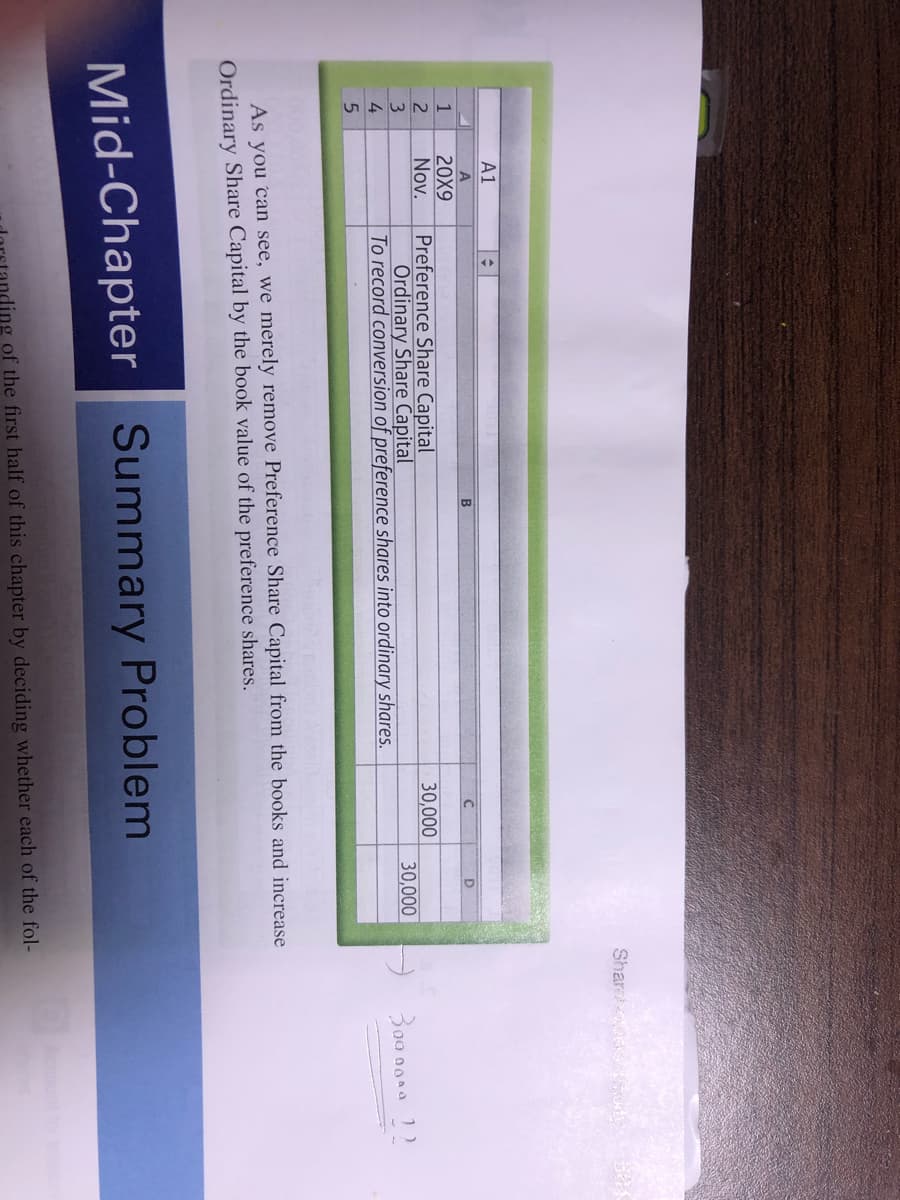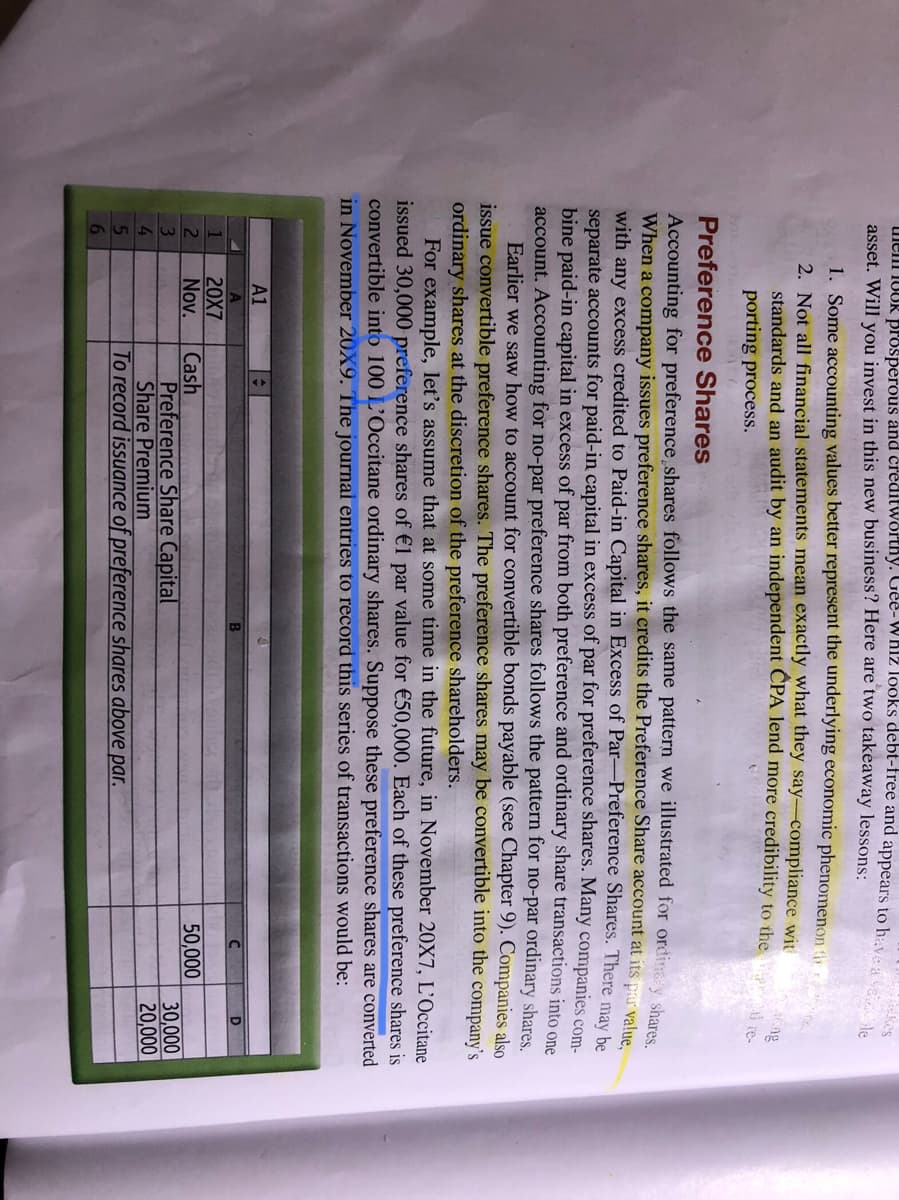Why these preference shares is convertible into 100 L’Occitane ordinary share. The ordinary share capital (in the second image)aren't 3000000 and debit another subject (I don't know how to balance it).
Why these preference shares is convertible into 100 L’Occitane ordinary share. The ordinary share capital (in the second image)aren't 3000000 and debit another subject (I don't know how to balance it).
Financial Management: Theory & Practice
16th Edition
ISBN:9781337909730
Author:Brigham
Publisher:Brigham
Chapter21: Dynamic Capital Structures And Corporate Valuation
Section: Chapter Questions
Problem 3MC: David Lyons, CEO of Lyons Solar Technologies, is concerned about his firms level of debt financing....
Related questions
Question
Why these preference shares is convertible into 100 L’Occitane ordinary share. The ordinary share capital (in the second image)aren't 3000000 and debit another subject (I don't know how to balance it).

Transcribed Image Text:Share s ut
A1
20X9
Nov.
1
Preference Share Capital
Ordinary Share Capital
To record conversion of preference shares into ordinary shares.
30,000
3.
4
30,000
As you can see, we merely remove Preference Share Capital from the books and increase
Ordinary Share Capital by the book value of the preference shares.
Mid-Chapter Summary Problem
ling of the first half of this chapter by deciding whether each of the fol-

Transcribed Image Text:256655
Kes
uleni 10UR Prosperous and creditworthy. Gee-WhizZ looks debt-ree and appears to hay es
asset. Will you invest in this new business? Here are two takeaway lessons:
1. Some accounting values better represent the underlying economic phenomenon
2. Not all financial statements mean exactly what they say-compliance wit
standards and an audit by an independent CPA lend more credibility to the
porting process.
Preference Shares
Accounting for preference shares follows the same pattern we illustrated for ordina y shares
When a company issues preference shares, it credits the Preference Share account at its par valu
with any excess credited to Paid-in Capital in Excess of Par-Preference Shares. There may be
separate accounts for paid-in capital in excess of par for preference shares. Many companies com-
bine paid-in capital in excess of par from both preference and ordinary share transactions into one
account. Accounting for no-par preference shares follows the pattern for no-par ordinary shares.
Earlier we saw how to account for convertible bonds payable (see Chapter 9). Companies also
issue convertible preference shares. The preference shares may be convertible into the company's
ordinary shares at the discretion of the preference shareholders.
For example, let's assume that at some time in the future, in November 20X7, L'Occitane
issued 30,000 preference shares of €1 par value for €50,000. Each of these preference shares is
convertible into 100 L'Occitane ordinary shares. Suppose these preference shares are converted
in November 20X9. The journal entries to record this series of transactions would be:
A1
20X7
Nov.
50,000
Cash
Preference Share Capital
Share Premium
To record issuance of preference shares above par.
3
4.
30,000
20,000
6
Expert Solution
This question has been solved!
Explore an expertly crafted, step-by-step solution for a thorough understanding of key concepts.
Step by step
Solved in 2 steps

Knowledge Booster
Learn more about
Need a deep-dive on the concept behind this application? Look no further. Learn more about this topic, accounting and related others by exploring similar questions and additional content below.Recommended textbooks for you


Business/Professional Ethics Directors/Executives…
Accounting
ISBN:
9781337485913
Author:
BROOKS
Publisher:
Cengage


Business/Professional Ethics Directors/Executives…
Accounting
ISBN:
9781337485913
Author:
BROOKS
Publisher:
Cengage